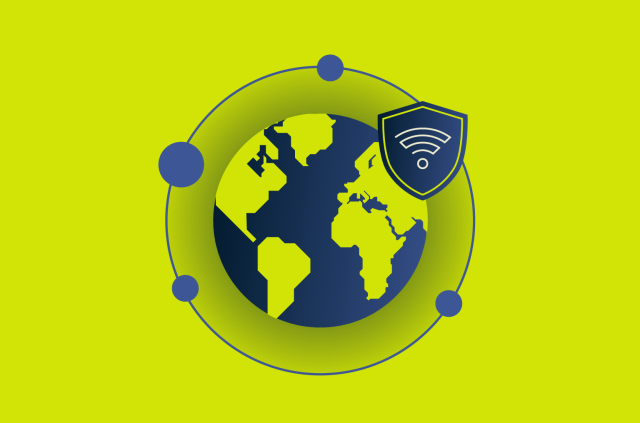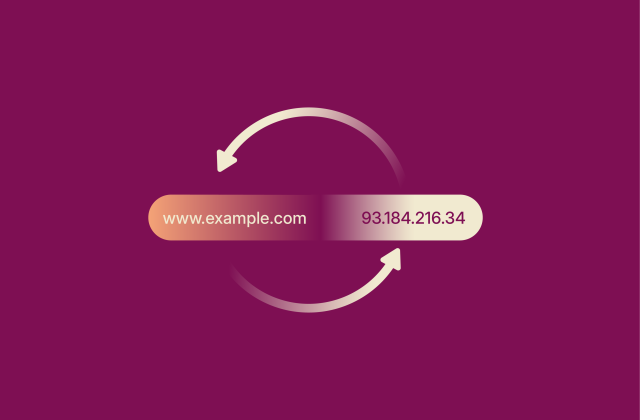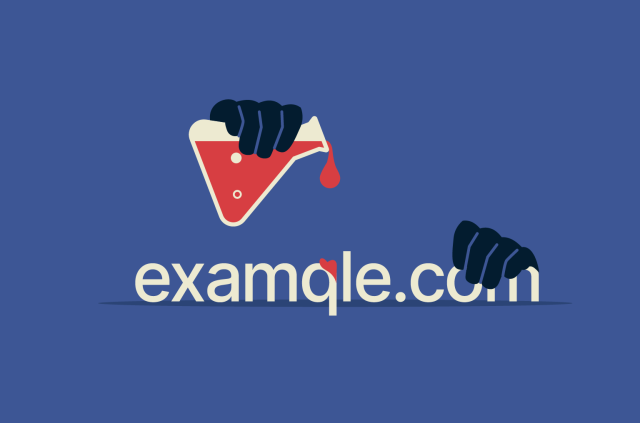Zero-trust network access (ZTNA) explained

As remote work, cloud services, and cyber threats evolve, traditional network security models are no longer enough. Zero-trust network access (ZTNA) offers a new approach to securing digital environments that’s designed to meet the challenges of a perimeterless environment.
This guide breaks down what ZTNA is, how it works, and why it’s becoming a cornerstone of modern security strategies.
Note: ExpressVPN is a consumer privacy tool that serves a different purpose than an enterprise framework like zero-trust architecture. We cover this topic to help readers understand its role in the wider cybersecurity landscape.
What is a zero-trust network?
A zero-trust network is a modern approach to cybersecurity that operates on the principle of “never trust, always verify.” To understand why it’s considered innovative, it helps to compare it to traditional network security models.
Traditional security models typically rely on a well-defined network perimeter. Once users or devices are inside that perimeter, they’re generally trusted by default and granted broad access to network resources.

In contrast, a zero-trust network assumes that no user or device, whether inside or outside the perimeter, should be trusted automatically. Every access request is thoroughly verified based on identity, device security posture, location, and other context. Even after successful authentication, users are granted only the minimum access necessary to perform their specific tasks. This approach helps limit the potential damage of compromised credentials or devices.
A zero-trust access network is a key part of the broader zero-trust architecture that guides modern cybersecurity strategies.
Why zero trust matters in modern cybersecurity
Traditional perimeter-based security models, such as network access control (NAC), were built for a time when users and applications mostly resided within a controlled corporate network. Today, however, users, devices, and workloads are often spread across cloud environments, remote locations, and third-party networks, so relying on a central network boundary no longer provides effective protection.
The fact that traditional network security models implicitly trust anyone inside the network also creates broad attack surfaces vulnerable to compromised credentials and insider threats. As attacks grow more sophisticated and infrastructures more fragmented, organizations need a new security model that doesn’t assume trust based on location or credentials alone.
Zero-trust security directly addresses these weaknesses. Instead of assuming anything inside the network is safe, it verifies each connection individually. This makes it better suited to a perimeterless security environment, where users, devices, and applications are no longer confined to a single, secure network.
How ZTNA works: Core components and flow
The ZTNA model depends on a combination of architectural principles and interlocking components to deliver secure, policy-based access to applications.
Core principles of ZTNA
ZTNA operates on three core principles:
- Never trust, always verify: No user, device, or network location is implicitly trusted. Each access request is evaluated dynamically, using identity, device posture, location, and other contextual signals.
- Least-privilege access: Users are granted access only to the specific applications or resources required for their role.
- Continuous verification: Trust is not granted indefinitely. ZTNA solutions continuously monitor sessions and re-evaluate access conditions. If risk levels change, access can be revoked in real time.
Components of a ZTNA solution
A complete ZTNA implementation typically includes the following components working together:
- Identity provider: ZTNA integrates with enterprise identity and access management systems, like Azure AD or Okta, to authenticate users. This ensures access is tied to verified identity and supports identity-based access controls like multi-factor authentication (MFA) and biometrics while enabling role-based authorization.
- Device security posture assessment: Before access is granted, ZTNA evaluates the security status of the connecting device. This may include OS version, patch level, presence of endpoint protection, and other risk indicators. Devices that don’t meet policy requirements are denied access or given limited privileges.
- Policy decision and enforcement points: These include both the access control engine, which evaluates access requests based on identity, device posture, and context, and the policy enforcement point, which enforces those decisions in real time. Together, they determine whether and how a user can access specific applications.
- Microsegmentation and application proxying: ZTNA gives users access only to the specific apps, and it keeps those apps hidden from the internet and anyone who isn’t authorized, reducing the chances of attack. This is done through outbound-only connections and strict network segmentation at the application level. This approach supports zero-trust data protection strategies by limiting exposure and tightly controlling access to sensitive resources.
- Continuous monitoring and telemetry: ZTNA solutions monitor active sessions to detect issues like suspicious behavior, device compromise, or policy violations. If risk levels change, access can be adjusted or revoked on the spot. The data collected is often sent to broader security tools like security information and event management (SIEM) or extended detection and response (XDR) platforms for further analysis.
Together, these components form a control loop: authenticate, evaluate, connect, monitor, and re-evaluate. This process ensures that access is dynamically controlled and aligned with real-time risk.
ZTNA inside the SASE framework
ZTNA is often implemented as a key component within a broader secure access service edge (SASE) architecture. SASE combines both network performance and security tools into one solution. It’s designed for how many of us work today: remotely, from different devices, and using cloud-based apps.
How ZTNA fits into the SASE framework
SASE is a cloud-native architecture that converges networking and security functions, including software-defined wide area networks (SD-WAN), secure web gateways (SWG), cloud access security brokers (CASB), Firewall-as-a-Service (FWaaS), and ZTNA, into a single, unified service.
Within this framework, ZTNA handles secure access control, ensuring that only authenticated and authorized users and devices can reach specific applications or resources. Other SASE components focus on securing web traffic, filtering content, or enforcing broader network policies.
ZTNA vs. corporate VPNs
Corporate virtual private networks (VPNs) (different from consumer VPNs like ExpressVPN) have been a reliable standard for decades. They are relatively simple to deploy, widely supported across devices, and familiar to most employees. They are often a cost-effective option for smaller organizations and remain well suited for situations where users need broad network access, such as IT staff managing infrastructure or employees working with legacy systems that aren’t easily segmented into individual applications.
At the same time, corporate VPNs route traffic through centralized gateways, which can introduce latency, especially when users access cloud-based or Software-as-a-Service (SaaS) applications outside the corporate network. They also typically grant broad network access once a user is authenticated, which can increase exposure if a device or credential is compromised. Organizations sometimes mitigate these risks with methods like IP whitelisting or network segmentation, but these can be difficult to scale.
ZTNA approaches remote access differently. Instead of connecting users to an entire network, it connects them directly to specific applications through cloud-based or on-premises access brokers. This can improve performance when accessing distributed resources and provides more granular access control by enforcing policies based on user identity and device posture. ZTNA solutions are also generally more scalable, as cloud-delivered models allow policies and inspection to follow users and workloads wherever they are.
In practice, many organizations use a mix of both: VPNs for legacy applications and full network access needs, and ZTNA for modern, cloud-based environments where scalability and granular control are priorities.
ZTNA vs. network access control (NAC)
ZTNA and NAC both manage access to your systems, but they differ significantly in how and when they enforce control.
NAC checks devices when they first connect to the network, often using agents or local hardware. Once a device passes the check, it’s usually given broad access. While NAC may attempt to monitor or restrict device behavior after this initial access is granted, this ongoing control is often limited. This can be risky if the device or user becomes compromised after the initial check.
NAC is also harder to set up and scale, especially across remote offices or cloud environments, because NAC often depends on hardware or software tied to specific networks, making it difficult to enforce policies consistently across diverse or cloud-based locations.
ZTNA, on the other hand, focuses on individual applications instead of the whole network. Access is based on who the user is and whether their device is trusted. It’s more precise and easier to manage in the cloud.
Benefits of implementing ZTNA
When integrated into a broader zero-trust implementation strategy, ZTNA supports several of the seven pillars of zero-trust security, enabling benefits such as:
Enhanced remote-access security
ZTNA secures remote access by verifying both user identity and device posture before granting any access. Rather than placing trust in a network location, ZTNA continuously evaluates session risk in real time, reducing the chance of unauthorized entry from compromised or non-compliant endpoints.
Secure access to multicloud and hybrid environments
ZTNA operates independently of network location, making it well-suited for environments that span cloud services, on-premises infrastructure, and remote workforces. Access is governed by dynamic policies tied to user identity, device posture, and context, enabling consistent enforcement across diverse environments.
Reduced third-party and insider risk
ZTNA enforces least-privilege access, ensuring that users (including contractors, vendors, or internal staff) can only access the specific resources they need. This limits potential exposure from compromised accounts or malicious insiders by reducing what any single user can see or do within the environment.
Improved user experience and application performance
ZTNA connects users directly to the applications they’re authorized to use, streamlining access and reducing latency. Security policies are applied closer to the user’s location, improving responsiveness and avoiding the delays that come with routing traffic through centralized infrastructure.

Challenges and limitations of ZTNA
While ZTNA offers significant security benefits, organizations may face some challenges when adopting and managing these solutions.
Performance and latency concerns
ZTNA’s security checks and policy enforcement can sometimes introduce latency, especially if the solution routes traffic through cloud-based gateways or uses multiple verification steps. Ensuring smooth user experience requires careful network architecture and optimization to balance security with performance.
Integration with legacy systems
Integrating ZTNA with existing legacy infrastructure can be complex. Older applications and systems may not support modern authentication or may require additional adaptation, making full ZTNA deployment more challenging in environments with diverse or outdated technology stacks.
Identity and policy complexity
ZTNA relies heavily on detailed identity verification and dynamic policy enforcement. Creating, managing, and continuously updating granular access policies can be resource-intensive and requires skilled administration to avoid gaps or overly restrictive access.
Use cases for zero-trust network access
Here are some common reasons why modern organizations adopt ZTNA.
- Securing access for remote and hybrid workforces: ZTNA is ideal for remote and hybrid environments because it enforces access policies based on user identity, device security, and context, ensuring consistent protection regardless of where users connect from or where the resources are located.
- Mergers and acquisitions integration and partner collaboration: ZTNA speeds up post-merger IT integration and partner collaboration by providing secure, easy, and instant access to internal apps without exposing the whole network.
- Regulatory compliance and audit readiness: Granular access controls and centralized logging help organizations meet compliance rules and make audits easier by showing who accessed what, when, and from where. ZTNA works smoothly with cloud-based data protection tools to enforce these rules directly, keeping your systems compliant across different locations without extra work for IT teams.
How to choose a ZTNA solution
Choosing the right ZTNA solution is critical for successfully implementing zero-trust security. It requires balancing security needs, deployment complexity, and usability while ensuring the solution aligns with your organization’s environment and goals.
Evaluation criteria for ZTNA vendors
When evaluating ZTNA vendors, consider the following factors.
- Flexible deployment options: Look for a solution that works across all parts of your infrastructure, whether in the cloud, on-site, or in a mix of both. It should be able to manage different types of network traffic and adapt to how your organization grows.
- Device compatibility: Some platforms require software to be installed on every user device, which may be a problem if you work with contractors, partners, or employees using personal or unmanaged devices. If that’s the case, make sure the platform supports browser-based or agentless access.
- Support for key apps and services: Check whether the solution supports all the applications and tools your team uses, such as internal web apps, remote desktop tools, or file-sharing systems. Limited support can slow adoption and create workarounds that weaken security.
- Visibility and logging: A good solution should keep detailed records of who accessed what, when, and from where. This helps with monitoring, audits, and investigations, and is essential for meeting compliance requirements.
- Scalability and performance: The platform should deliver fast, reliable access to applications no matter where your users are or how much your team grows. Avoid solutions that slow down over time or struggle to serve users in different regions.
- Security depth: Look for more than just basic access control. A strong ZTNA solution should also restrict what users can see and do based on their role and continuously recheck whether access should still be allowed. Bonus points if it works with other security tools you already use to protect data and monitor user behavior.
Red flags to watch out for in ZTNA platforms
You should be cautious of ZTNA platforms that:
- Overrely on network location: Granting or denying access mainly based on IP addresses, network segments, or physical location means the solution isn’t truly zero trust. Access should depend on identity, device health, and context instead.
- Support only limited protocols or applications: If a platform only protects browser-based apps and can’t handle legacy systems or protocols like Secure Shell (SSH) or Remote Desktop Protocol (RDP) without complex workarounds, it may not meet your needs.
- Lack session monitoring or continuous trust verification: Solutions that verify identity only at session start and do not continuously assess risk can leave security gaps that attackers might exploit.
- Require full software installation on every device: Platforms that need software on all endpoints may not support unmanaged or personal devices well, limiting flexibility for third parties or remote workers.
- Have manual policy management: If defining and updating access policies is difficult, time-consuming, or requires custom coding, the system might be hard to manage as you scale.
- Provide minimal logging and reporting: Without detailed logs and visibility, auditing, compliance, and incident response will be challenging.
- Create vendor lock-in: Platforms that don’t integrate smoothly with your existing identity systems, endpoint tools, or data protection workflows can limit flexibility and increase costs.
FAQ: Common questions about zero-trust network access
How does ZTNA support a zero-trust architecture?
Zero-trust network access (ZTNA) enforces zero-trust principles by continuously verifying user identity, device health, and context before granting access. And it only grants access to specific applications instead of the entire network. This reduces trust assumptions, limits lateral movement, and helps implement least-privilege access, which are key pillars of zero-trust security.
Does ZTNA require an agent on every device?
Some zero-trust network access (ZTNA) solutions require installing an agent or client on each device to enforce security policies and verify device posture, while others offer agentless options using network-level controls or browser-based access. Whether an agent is needed depends on the specific vendor and deployment model. Understanding these differences is crucial when choosing a ZTNA solution.
Is ZTNA replacing VPN?
It depends on the type of virtual private network (VPN). Corporate VPNs have been a trusted way to give remote workers secure access to company systems for years, and they’re still widely used. The catch is that most VPNs open up a broad tunnel into the network, which can mean more risk if a device or account is compromised.
Zero-trust network access (ZTNA) takes a different route: it checks users, devices, and context on an ongoing basis, and it only lets people into the specific apps or resources they need. This “least privilege” style makes ZTNA a solid next step for tighter, more flexible remote access, often working alongside VPNs rather than replacing them outright.
That said, ZTNA should not be confused with consumer VPNs like ExpressVPN. Corporate VPNs and ZTNA often overlap in enterprise use, but consumer VPNs serve a completely different role, protecting privacy, hiding IP addresses, and securing browsing on public Wi-Fi.
Take the first step to protect yourself online. Try ExpressVPN risk-free.
Get ExpressVPN




















